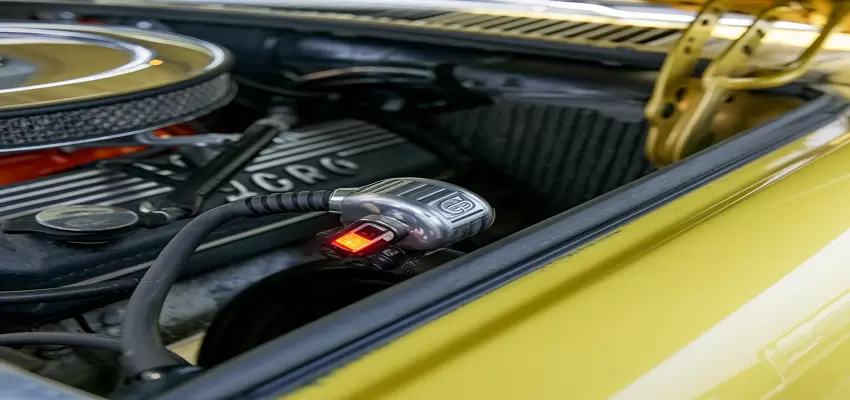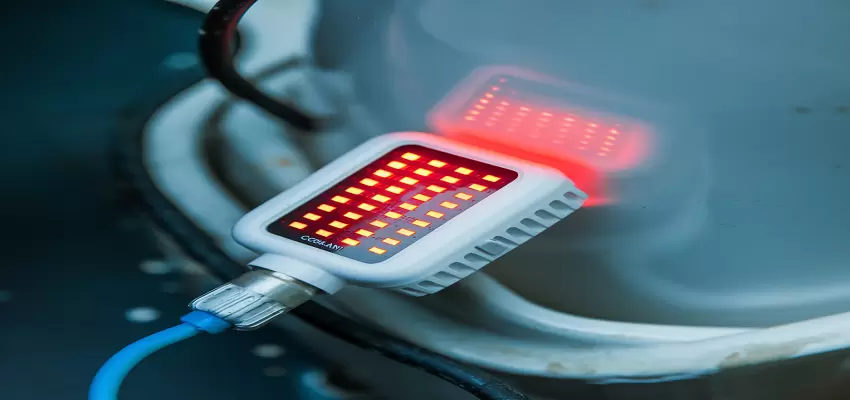Ever wondered how your car knows when it’s running too hot? Enter the coolant temperature sensor, your engine’s unsung hero.
A vehicle’s heart beats normally because of this small device. Come along with me as we look into coolant temperature sensors and discover their importance in your car.
What is a Coolant Temperature Sensor?
In the engine management system of your car, there is one vital element that is referred to as a coolant temperature sensor or ECT sensor.
Because it constantly monitors the temperature of the coolant circulating around the block, it serves as a thermometer for the engine.
The Anatomy of a Coolant Temperature Sensor
Imagine it: a tiny device about the size of your thumb without ostentation. That’s your coolant temperature sensor. It typically consists of:
- A thermistor (is a resistor which is sensitive to temperature)
- A two-wire connector
- A threaded body for installation
Hence, the thermistor remains at the center stage. When there is a variation in temperature of the engine coolant, the resistance of the thermistor also varies. Such variation results into quite accurate measurements of temperature changes by the sensor.
Location, Location, Location
Where can you discover this little device? Typically it can be found seated close to the thermostat housing or within the cylinder head. There may be different sensors on several automobiles to monitor multiple areas of the engine or for backup.
How Does a Coolant Temperature Sensor Work?

The functions of this ingenious gadget can be analyzed now that we know what it is.
- Measuring Temperature: The thermistor responds to temperature alterations as coolant runs all around it.
- Resistance Changes: Thermistor, that is temperature-sensitive resistor, exhibits variance in its electrical resistance with varying temperatures. Colder temps mean higher resistance, while hotter temps lower it.
- Signal Generation: This resistance change creates a voltage signal.
- Data Transmission: The sensor sends this voltage signal to the Engine Control Unit (ECU).
- ECU Interpretation: You can see that this signal is translated into temperature reading by the ECU.
The Coolant Temperature Sensor’s Role in Engine Management
This sensor isn’t just sitting there for show. It’s constantly feeding crucial data to your car’s brain (the ECU). Here’s how it impacts various systems:
- Fuel Injection: The ECU adjusts fuel mixture based on engine temperature.
- Ignition Timing: Cooler engines need different timing than warm ones.
- Fan Operation: Tells the cooling fan when to kick in.
- Temperature Gauge: Offers information for your dashboard meter.
Types of Coolant Temperature Sensors
Various uses necessitated the design of distinct kinds of coolant temperature probes. The key kinds that you will likely face in your car include:
- NTC (Negative Temperature Coefficient) Sensors
- Most common type
- Resistance decreases as temperature increases
- Ideal for a wide temperature range
- PTC (Positive Temperature Coefficient) Sensors
- Less common
- Resistance increases with temperature
- Often used in specialized applications
- Dual-Element Sensors
- Contain two sensing elements
- One for the ECU, one for the dashboard gauge
- Provides redundancy and separate circuits
| Sensor Type | Resistance Behavior | Common Use |
| NTC | Decreases with heat | Most vehicles |
| PTC | Increases with heat | Specialized systems |
| Dual-Element | Varies | Luxury or performance cars |
Signs of a Faulty Coolant Temperature Sensor
But, the following are some indications that can tell you whether or not your sensor is overdue for a replacement:
- Check Engine Light: Often the first warning sign
- Poor Fuel Economy: Engine runs rich or lean due to incorrect temp readings
- Black Smoke: Excess fuel being burned
- Overheating: Engine runs too hot without triggering cooling systems
- Hard Starting: Especially when the engine is cold
- Erratic Temperature Gauge: Fluctuating or stuck readings
Case Study: The Mysterious Overheating Jeep
There are times when John’s 2015 Jeep Wrangler would be overheating during long trips. Several mechanics could not tell what was wrong until one noticed that the coolant temperature sensor was faulty. After replacement, the Jeep ran perfectly, showcasing how a small sensor can cause big problems.
Diagnosing a Faulty Coolant Temperature Sensor

Think your sensor might be acting up? Here’s how to play detective:
- Visual Inspection: Look for damage or corrosion
- Multimeter Test: Check resistance at different temperatures
- OBD-II Scanner: Read error codes and live data
- Temperature Gun: Compare sensor readings to actual coolant temp
“A proper diagnosis is half the cure. Don’t skip the detective work when it comes to your coolant temperature sensor.” – Master Mechanic Mike
How to Replace a Coolant Temperature Sensor
If, in the event that you have ascertained that your sensor is malfunctioned, adhere to these guidelines for changing it:
Tools You’ll Need:
- Socket set
- Pliers
- New coolant temperature sensor
- Coolant (for topping up)
- Rags for cleanup
Step-by-Step Replacement Process:
- Locate the Sensor
- Usually near the thermostat housing or cylinder head
- Consult your vehicle’s manual for exact location
- Prep the Vehicle
- Ensure the engine is cool
- Disconnect the battery
- Remove the Connector
- Carefully unplug the electrical connector
- Note its orientation for reinstallation
- Extract the Old Sensor
- Use the appropriate socket to unscrew the sensor
- Be prepared for some coolant spillage
- Install the New Sensor
- Apply a bit of anti-seize compound to the threads (if recommended)
- Screw in the new sensor and tighten to spec
- Reconnect and Refill
- Plug in the electrical connector
- Top up coolant if necessary
- Test
- Reconnect the battery
- Start the engine and check for leaks
- Monitor temperature gauge for proper operation
Pro Tip: Always use a sensor that matches your vehicle’s specifications. A generic sensor might save a few bucks but could cause headaches down the road.
The Importance of Coolant Quality
Coolant temperature measurement relies heavily on the quality of coolant used. Here’s why quality coolant matters:
- Accuracy: Clean coolant ensures accurate temperature readings
- Sensor Life: Poor quality coolant can corrode or damage the sensor
- Overall Engine Health: Good coolant protects more than just your sensor
Coolant Maintenance Tips:
- Flush and replace coolant according to manufacturer schedules
- Use the correct type of coolant for your vehicle
- Check coolant levels regularly
- Address any coolant leaks promptly
The Future of Engine Temperature Monitoring
Auto sensor technology continues to change with improving vehicle designs and shapes; here’s what we should expect in the near future:
- Integrated Sensor Systems: Merging several acts into one unit
- Wireless Sensors: Reducing wiring complexity
- AI-Enhanced Monitoring: Temperature pattern-based predictive maintenance

Frequently Asked Questions
In closing, let’s deal with some of the frequently asked questions regarding coolant temperature sensors:
- Q: How often should a coolant temperature sensor be replaced? A: There’s no set interval. Most sensors last the life of the vehicle, but they can fail. Replace if you notice symptoms of failure.
- Q: Can I drive with a bad coolant temperature sensor? A: Advisably not; it will result in low fuel consumption, engine destruction, and overheating.
- Q: How much does it cost to replace a coolant temperature sensor? A: Generally, this can get at least $50 to as much as $200 depending on what the vehicle is and how much labor is required.
- Q: Can a coolant temperature sensor cause a car not to start? A: Occasionally this is true. In order to defend itself, the ECU can sometimes decline to turn on the engine if it thinks that the temperature is too high or too low.
- Q: Are coolant temperature sensors and water temperature sensors the same thing? A: Indeed, these terms are used interchangeably often.
Conclusion
Although the coolant temperature sensor may be tiny, its effect on the engine’s performance is enormous. This tiny gadget helps regulate fuel economy and stops overheating thus promoting smooth rides. Knowing how it operates and understanding some of the symptoms of its breakdown can keep your engine in good shape for a long time.
Always bear in mind that proper functioning of Coolant Temperature Sensor is essential for longevity and performance of your engine Don’t forget this little yet powerful part as you maintain your car; otherwise there won’t be a reason why you shouldn’t keep an eye on it so that your engine would lead to years of dependability.

With over 5 years of dedicated experience in the automotive industry, I am passionate about all things automotive. My journey began with a deep curiosity for automobiles, which led me to delve deeper into their mechanics, technology and trends. My expertise spans various aspects of the automotive world, from the latest electric vehicles to classic car restoration techniques. Through my articles, I aim to share my knowledge and insights, helping readers stay informed and inspired in the fast-paced world of the automobile.











